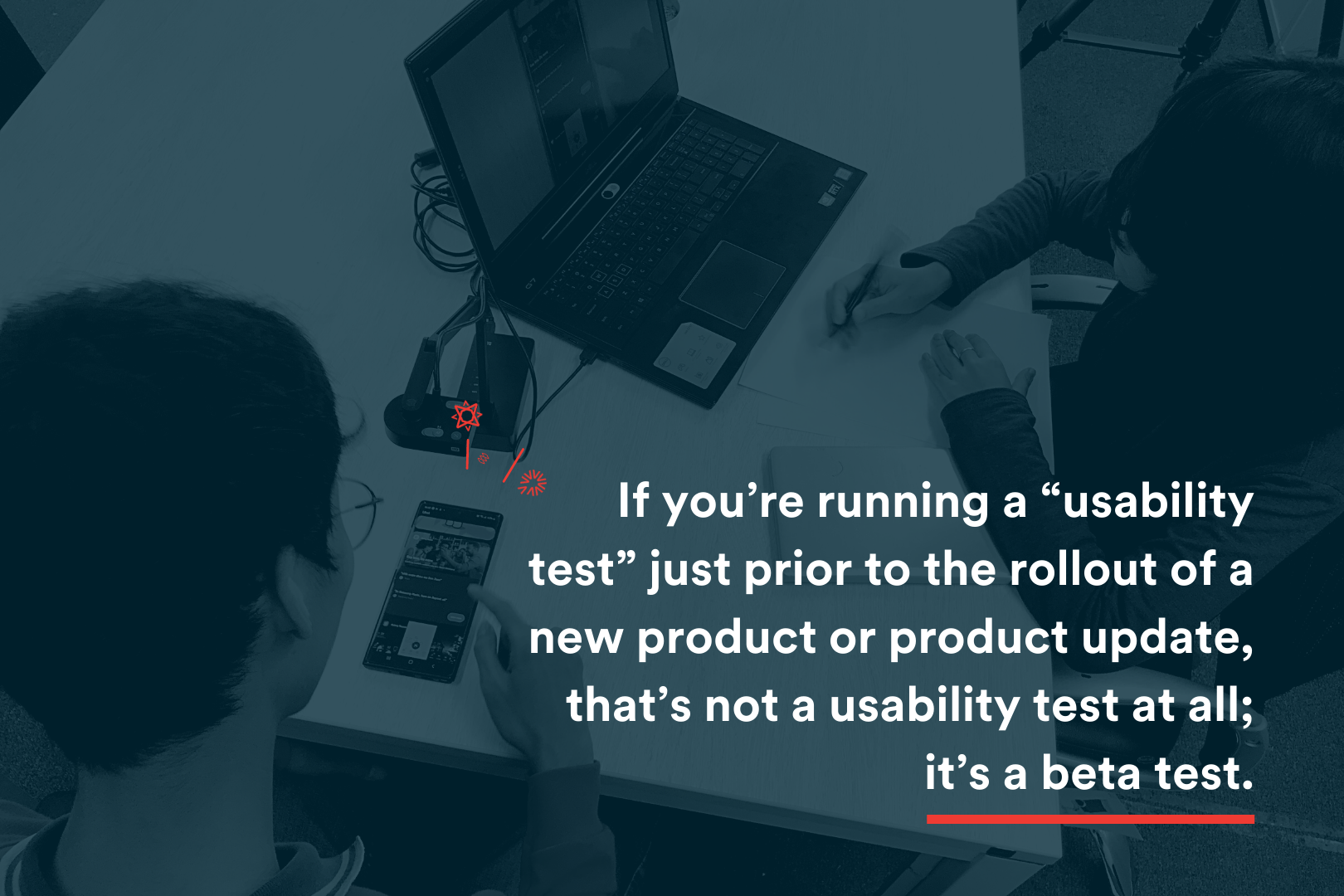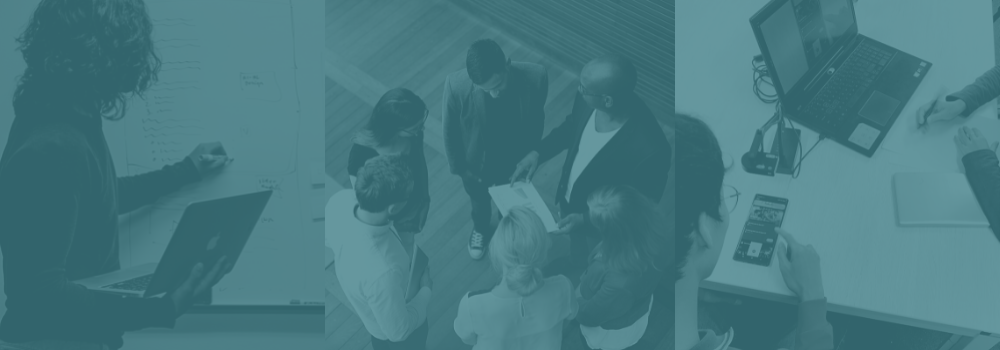You’ve got a brand new product, app, or update coming in the near future. Your engineering team is ready to fire on all cylinders to bring it to the masses. The time is now.
But hold on for just a moment. How sure are you that people will use your product or service the way you intend?
Assumptions are the enemy of technology. They can lead engineers, departments, and entire companies down the wrong fork in the road, wasting time and resources and delaying innovation.
This is precisely where usability testing comes in. A usability test takes all your assumptions and turns them into real-world, actionable data. They can support a hypothesis or send you back to the drawing board. But the thing to realize about a usability test is that it’s okay to go back to the drawing board. If you can conduct the usability test early in the development cycle, you can correct issues before they become enormous, resource-intensive problems.
The insights made possible by a usability test are indispensable for development of any and all tech products and services. Let’s explore how to do a usability test and the positive results they can bring for your organization.
Usability Testing Definition
A usability test is exactly what it sounds like: a test designed to gauge the overall effectiveness of your user experience (UX).
UX is an entire discipline, with best practices and strategies designed to make interfaces as simple to use as possible and accessible for all prospective users. Using proven UX strategy, you can arrive at a product that has all the hallmarks of a highly usable, intuitive design. But the ultimate test of your product is whether or not people use it the way you expect.
A usability test challenges the assumptions you’ve made based on your business goals and the inherent best practices of UX design. You can take things out of the arena of the theoretical and toward the practical.
The Timing of Your Usability Test
One of the biggest mistakes you can make when it comes to usability testing is to embark on this step too late in the process, or worse, not at all.
If you’re running a “usability test” just prior to the rollout of a new product or product update, that’s not a usability test at all; it’s a beta test. And a beta test is designed to work out the kinks of a piece of software late into the development cycle, identifying bandwidth, server strain, and other areas of concern that only become apparent when a product is exposed to a much larger population of users.
A usability test is far more foundational. It should be conducted at the proof-of-concept stage, before you start the hard and arduous process of engineering the final product. That way, you can identify potential flaws in your thinking and correct them early on, using your findings to guide the development of your endgame. If you wait to do so, you’re going to lose out on precious resources, not the least of which is time.
Who's Participating?
You have user personas ready to go, right? These simulacra of your actual users provide guidance on the development of your UX so that you’re always designing for your ideal and even not-so-ideal users, rather than just relying on your own assumptions and inherent biases.
(For a refresher on user personas and their importance, check out “The Complete Guide to User Experience.”)
Once you know who your users are or will be, you have a pool from which to draw your testers. You should identify a cross-section of those who could conceivably use your product. This cross-section should encompass a wide variety of people of every demographic, from power users to casual users, those well-versed in tech to the not so tech-savvy, old, young, and across the cultural spectrum.

If you already have a product and this is an update or a new product rollout geared toward your current customer base, you’re at an advantage over a brand new company. That’s because you likely already have the means to acquire users for your test, via email, phone, and other forms of outreach. If you’re having trouble reaching all personas or getting the numbers you need, you may have to sweeten the deal with gift cards and other perks (the cost will be more than worth it given the acquired insights).
For brand new business ventures, the process of acquiring testers can be a little trickier. You may have to rely on a third party to find testers and conduct the usability test, which can add expenses.
It should be emphasized that the expenses paid now will pale in comparison to the cost of re-engineering a tech product later on because you missed a critical flaw. This is especially true if you roll out a product and the first experience most persons have with it is poor, which can turn them off from becoming or remaining customers. That’s how important the usability test is to your development cycle.
The Usability Test Process
Sometimes, the usability test in question doesn’t even have to be digital in nature. Laying out the UX process or the setup of an application even on a whiteboard, with participants asked to go through a process and describe what they see and how they feel about it, can be valuable too.
In most instances, however, your usability test will be a digital mock-up of what the end product UX could end up looking like (or, if this is a physical product, a prototype build with all the mechanisms where you expect them to be).
In these scenarios, you will ask leading questions of your users designed to gauge how they interact with the product. These will include things like:
- I want you to take x action. How would you do that?
- Walk me through the steps you would take to do x?
- What would you assume x button does?
- What does this on-screen instruction tell you will happen?
- Where would you go to find x?
A usability test can and should range from the simple, i.e. click this button, to the more complex, i.e. go through a series of steps to conduct an action.
At the end of the exercise, you should ask each user questions about specific things and about their overall experience. This will help you get an unvarnished macro and micro view of the scenarios you’ve outlined.
What to Do With The Results
What you’re looking for during these usability tests is any kind of friction that compromises the experience you’ve envisioned.
- Is it obvious how to conduct certain critical actions?
- Does the color scheme lend itself to visibility and intended action?
- Are the menus laid out in an intuitive manner, with each option where the user would expect them to be?
- Are the words explicit enough to be understood?
- Is the symbology easily understood?
These are just a few of the things you’ll test. And this is also why it’s so important to have such a wide cross-section of potential users. A young, web-savvy user who has grown up with their smartphone glued to their hands may have a very different experience with your interface than a user who isn’t as adept at tech.
You have to design for both these personas and more, assuming they are likely users of your product. This may even lead you to offer additional accessibility options, providing customization tools to let the users themselves create the best experience possible (although, to be honest, the best UX will account for all these options out the gate so that it’s not left to chance and/or the ability of the user).
The results you acquire will guide your thinking and enable you to make an informed decision about the actual engineering of your product. And this is precisely why the usability test needs to be done early, so that you maximize your available resources and can move forward with confidence.
Ready to conduct your own usability test but don’t know where to start? Contact Aviture. Our UX experts will guide you on the usability testing process and develop your innovative idea into a reality.





